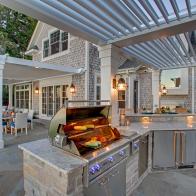1 / 15
A Swimming Pool
"When it comes to installing an in-ground pool, the average cost is between $30,000 and $60,000," says Judy Dutton, deputy editor for Realtor.com. "But on average, the ROI (return on investment) is abysmal. Pool installation is an especially bad idea in cold areas where pool use would be limited, or in areas where nearby houses don’t have pools. Many buyers just steer clear of pools because they have young kids who can’t swim, or just don’t want to deal with the maintenance or insurance and liability issues."
.-Battle-on-the-Beach-courtesy-of-HGTV.-.jpg.rend.hgtvcom.196.196.suffix/1714847929029.jpeg)







